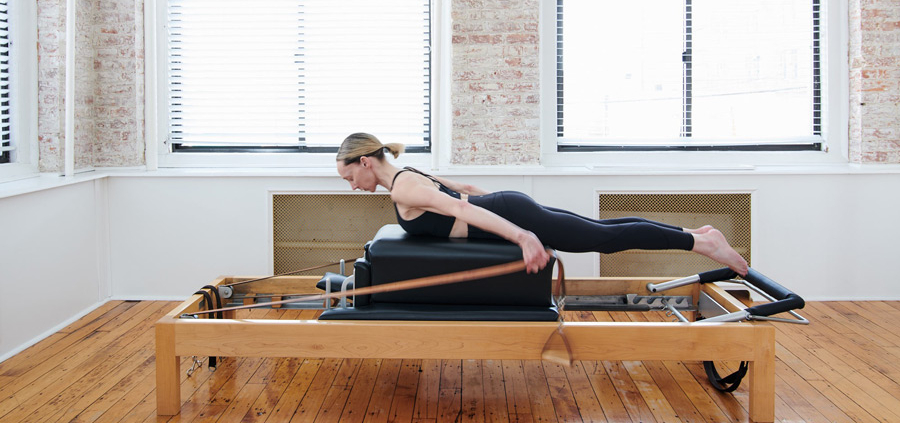Twelve years ago, I suffered from severe Sacroiliac (SI) joint disfunction because of weak glute activation. Basically, this meant I could not pick up my newborn daughter, cough, sneeze or sit down without extreme pain. Now, when I say extreme, I mean extreme. I am tough.
That’s when I found Pilates. At the time, I had received dual Masters degrees in nutrition and exercise physiology so I worked in the wellness industry (and lived and breathed fitness and nutrition). I knew about Pilates and thought that this was the perfect time to try it. The practice quickly taught me to engage my deepest muscles, the transverse abdominus of my powerhouse or the area that includes abdomen, low back and hips. Immediately, I felt protection. I learned how to engage my gluts, stabilize my joints and strengthen my entire body, all while maintaining flexibility.
There are two types of Pilates practices, on the mat through a series of movements and exercises done on specifically-designed apparatus. The most well-known machines are the Reformer, the Cadillac, the Ladder Barrel, the Spine Corrector, the Half Barrel, the Wunda Chair and the High Chair. You may have also heard of the Baby Chair, the Pedi-Pole or the Foot Corrector. When consistently practiced, Pilates can improve strength, flexibility, stability and balance through proper body alignment.
Fast forward, I was hooked and started to feel better…so much so I could pick up my baby girl. I had private lessons twice a week and soon developed concentration, control and centering (the famous three Cs of Pilates that help in the studio but also in every day life). I vowed one day to open a studio that provided the same experiences for my clients.



